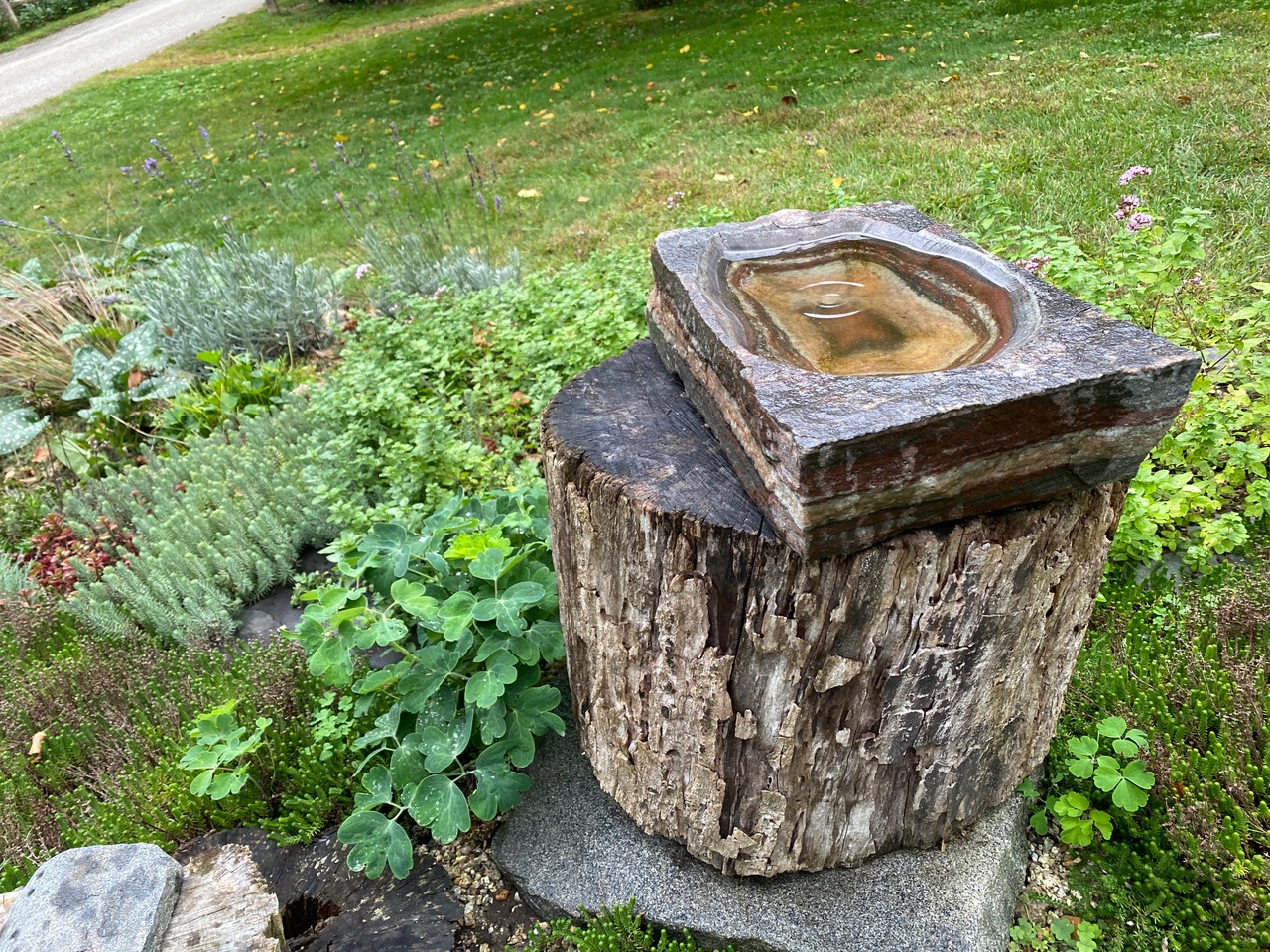My former Extension colleague Karen lives in southwest New Hampshire, where her husband/partner is a skilled stone mason. A few years ago I asked Karen and Andras if they could suggest a place to get a natural rock bird bath. It was my good fortune that they offered a rectangular piece of gneiss that Andras had chiseled into a beautiful bird bath. The banding of light and dark minerals in this metamorphic rock adds such beauty to our yard and offers a drinking fountain for wildlife.
Except for winter when the water would freeze and thaw and break the stone, the bird bath has a prominent position in the front yard among our evolving xeric and herb garden.
The bath — about 18 inches by 12 inches — is perched on a large chunk of a tree, giving us a clear view from our front windows. Yesterday, under an overcast sky and occasional light rain, birds were moving through the yard. A dozen chipping sparrows, a handful of bluebirds, a phoebe, goldfinches, a downy woodpecker, several fall warblers (yellow-rumped, palm, pine). Our flower gardens, yard trees, and shrubs draw them in as they forage for seeds, spiders, insects, and fruits. So too does the bird bath. The bluebirds take turns, splashing about in the small basin. The sparrows and goldfinches wait for their chance to take a few sips of water, while perched on the lip of the bird bath. Later a chipmunk, although wary, takes a drink.
Once a week I scrub the basin to remove algae that forms on the rock and any bits of bird droppings. I never thought a bird bath was that essential for our yard as animals often get enough moisture from the food they eat. But the birds and chipmunks love the bath, as much as we love watching them splash and sip and swallow.

